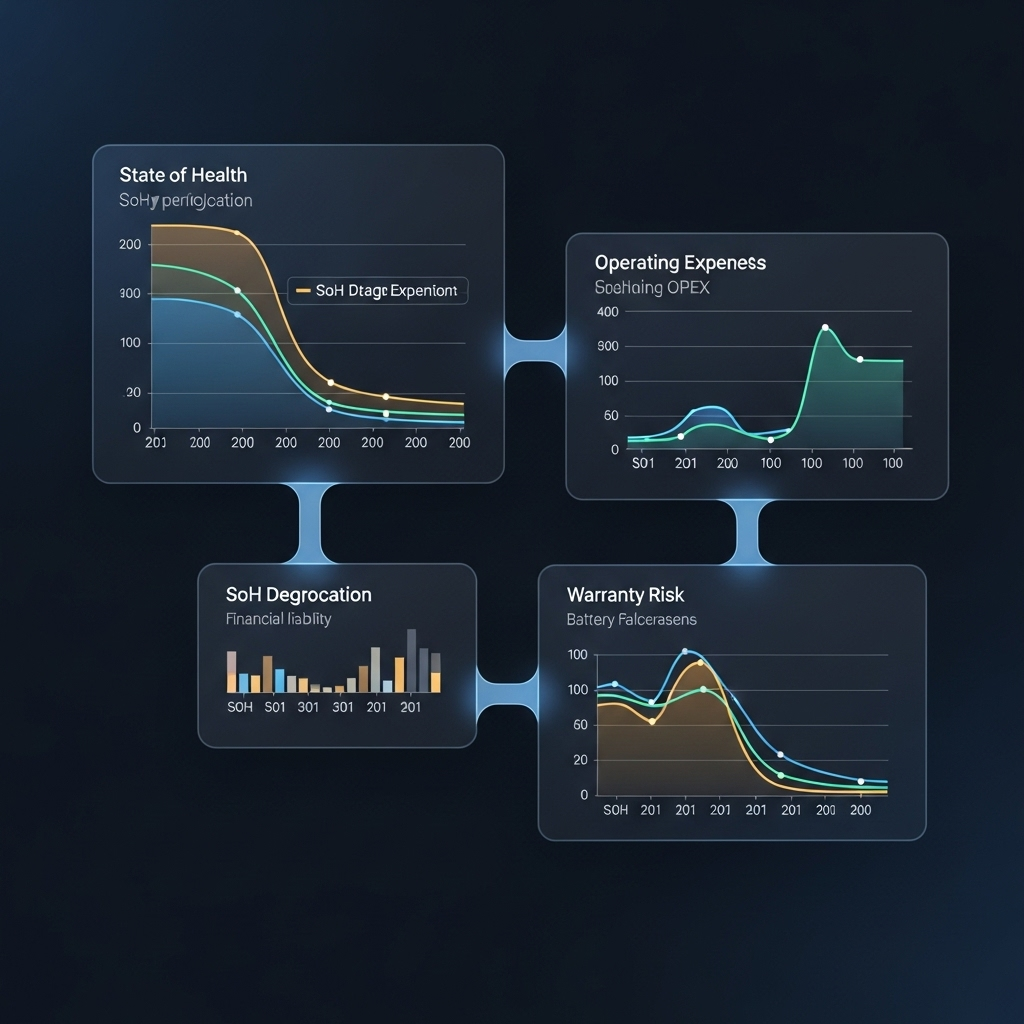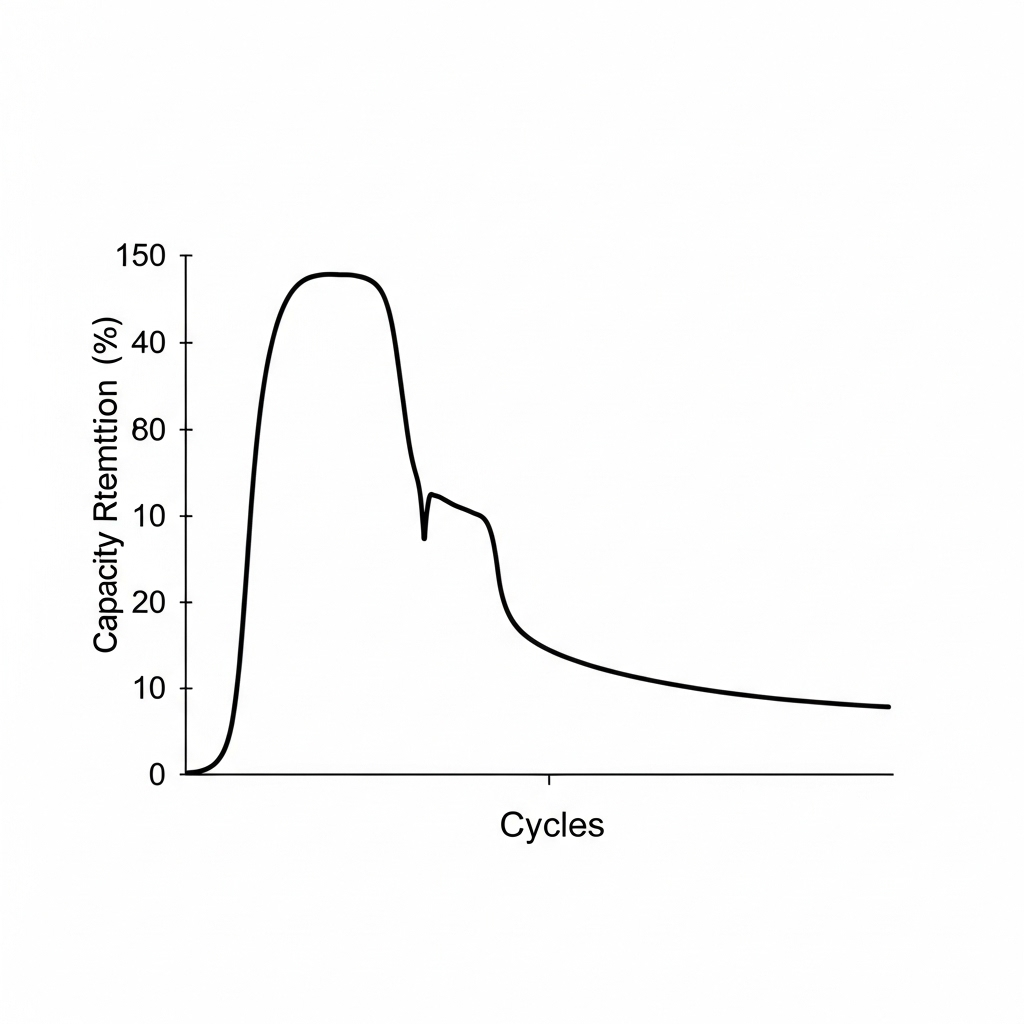An Energy Storage System (ESS) is a significant investment in your energy independence. While initial capacity and power output are important, the true value of an ESS unfolds over its operational life. A critical factor governing this value is battery degradation. Designing a system with degradation in mind from the start is not just a technical detail; it is the foundation for reliability, performance, and a warranty that holds true value. This approach ensures your system delivers predictable performance for years to come.
Understanding Battery Degradation: The Core Challenge
Every rechargeable battery, including the advanced Lithium Iron Phosphate (LiFePO4) cells used in modern ESS, experiences a gradual loss of capacity over time. This process is natural, but its speed is heavily influenced by how the battery is used. Acknowledging and planning for this is the first step in a robust ESS design blueprint.
Key Factors Influencing Degradation
Battery health is a delicate balance. Several operational conditions can accelerate capacity fade. The main culprits include:
- Temperature: Operating a battery outside its ideal temperature range (typically 15-35°C) causes stress. High temperatures accelerate chemical reactions that degrade battery components, while very low temperatures can affect performance and longevity.
- Depth of Discharge (DoD): This refers to the percentage of the battery's capacity that has been used. Regularly discharging a battery to a very low state of charge (a high DoD) puts more strain on its chemistry than shallower cycles.
- Charge and Discharge Rates (C-rate): Rapidly charging or discharging a battery generates more internal heat and puts mechanical stress on its internal structures, accelerating wear. As noted in the Innovation Outlook: Smart charging for electric vehicles report, recent tests show that even demanding applications can have limited impact on degradation if the battery's state of charge is managed properly.
Modeling and Predicting Battery Health
You cannot manage what you cannot measure. Modern ESS design relies on sophisticated battery degradation models to predict capacity and power fade over time. These models, like the one developed at Warwick University, use operational data to forecast a battery's future health. This allows manufacturers to build systems that actively manage stressors. For instance, a smart Battery Management System (BMS) can limit charge rates when the temperature is too high or adjust the operational state of charge to extend the battery's useful life.
Designing for Durability: A Degradation-Aware Blueprint
A proactive design philosophy shifts the focus from simply meeting initial specifications to ensuring long-term performance. This involves making strategic choices in hardware, software, and overall system architecture.
Smart System Sizing and Configuration
Properly sizing the battery for your specific energy needs is fundamental. A slightly oversized battery operates at a lower average DoD, which significantly reduces stress and extends its cycle life. The BMS is the brain of the operation, constantly monitoring cell voltage, temperature, and current. It ensures the battery operates within safe limits, preventing overcharging or deep discharging, which are major contributors to premature degradation.
The Importance of Standardized Design
As the energy storage market matures, the entire lifecycle of a battery comes into focus. The International Energy Agency (IEA) highlights the need for standardized battery design in its report, The Role of Critical Minerals in Clean Energy Transitions. Standardization simplifies disassembly and diagnostic testing, making it easier to identify the health of individual cells. This not only facilitates repairs but also opens up possibilities for cost-effective second-life applications, where batteries no longer suitable for primary use can be repurposed for less demanding roles.
The Warranty Framework: Aligning Promises with Reality
A warranty is more than a piece of paper; it is a commitment to performance. A degradation-aware warranty is transparent, realistic, and reflects the true operational capabilities of the ESS.
Defining End-of-Life (EoL)
A key term in any battery warranty is 'End-of-Life' (EoL). This does not signify that the battery stops working entirely. Instead, as defined by organizations like IRENA, EoL is typically the point when the battery can only hold a certain fraction of its original rated capacity, usually 70% to 80%. A clear EoL definition sets a tangible performance benchmark for the warranty period.
Structuring a Degradation-Aware Warranty
Simple time-based warranties (e.g., 10 years) can be misleading because they do not account for usage intensity. A more robust warranty structure incorporates performance metrics. The table below compares common approaches.
| Warranty Type | Description | Pros | Cons |
|---|---|---|---|
| Time-Based | Covers the battery for a set number of years. | Simple to understand. | Does not account for usage. Heavy use may degrade the battery before the period ends. |
| Cycle-Based | Guarantees a specific number of charge/discharge cycles. | Directly relates to usage. | Defining a 'cycle' can be complex (e.g., partial vs. full cycles). |
| Throughput-Based | Warrants a total amount of energy (e.g., MWh) the battery will deliver. | Accurately reflects total work done by the battery. | Requires monitoring to track total energy throughput. |
| Hybrid | Combines time, cycles, and/or throughput, whichever comes first. | Provides a comprehensive and fair measure of usage and age. | Can be more complex for the end-user to track. |
A hybrid approach, often guaranteeing a certain retained capacity after a specific number of years or a total energy throughput, offers the most balanced and transparent promise to the user.
Maximizing Value: From Operation to Second Life
An intelligently designed ESS provides value far beyond its initial installation. By understanding and managing its operation, you can maximize its lifespan and overall return on investment.
Optimizing Operational Profiles
How an ESS is used directly impacts its degradation rate and economic viability. As explained in IRENA's Renewable Power Generation Costs in 2024 analysis, different applications subject the battery to different stresses. A system used for daily energy arbitrage (storing cheap solar power for evening use) experiences different wear patterns than one used for grid services like frequency regulation, which involves rapid, shallow cycles. A degradation-aware ESS can be programmed with operational profiles that balance performance needs with long-term health.
The Growing Market for Second-Life Batteries
The concept of a circular economy is highly relevant to energy storage. An IEA report, The State of Energy Innovation, notes that while the market is still developing, technology improvements could significantly boost the use of second-life batteries. A battery at 70-80% capacity may be at its EoL for a demanding residential application but can have years of useful life in a less intensive role, such as providing backup power for telecommunication towers or community energy projects. This potential creates additional long-term value.
Linking Performance Metrics to Longevity
To truly manage your system's health, you need to be familiar with its key performance indicators. Understanding these metrics helps you align your usage patterns with the goal of maximizing lifespan. A comprehensive reference on solar storage performance can provide a detailed breakdown of concepts like Round-Trip Efficiency, C-rate, and State of Health, giving you a clearer picture of your system's condition and long-term potential.
A Forward-Looking Perspective
Building an ESS with degradation in mind is a holistic process. It begins with selecting high-quality components like LiFePO4 cells, integrating them into a thoughtfully designed system with effective thermal management, and controlling them with a smart BMS. This blueprint results in a more reliable product, a more transparent warranty, and a greater return on your investment. By focusing on long-term health instead of just day-one specs, you secure a resilient and dependable energy future.
Disclaimer: This article is for informational purposes only and does not constitute financial or investment advice. Consult with a qualified professional before making any investment decisions.
Frequently Asked Questions
What is the typical end-of-life for an ESS battery?
End-of-life (EoL) for an ESS battery is generally defined as the point when its capacity drops to 70-80% of its original rating. It will still function but with reduced storage capability. The timeframe to reach EoL depends heavily on the battery chemistry, design quality, and operational conditions.
How does my usage pattern affect my battery's warranty?
Your usage pattern is critical. Warranties are often tied to metrics like cycles or total energy throughput (MWh). Heavy usage, such as deep daily discharges or frequent high-power demands, will use up these allowances faster than light usage, potentially ending the warranty period sooner than the stated calendar years.
Can a battery last longer than its warranty period?
Yes, it is possible. A warranty guarantees a minimum level of performance for a specified period. If you operate your battery under ideal conditions—such as maintaining a moderate temperature, avoiding consistently deep discharges, and using slower charge/discharge rates—it can certainly continue to perform well beyond the end of its warranty term, albeit with gradually diminishing capacity.





Leave a comment
All comments are moderated before being published.
This site is protected by hCaptcha and the hCaptcha Privacy Policy and Terms of Service apply.